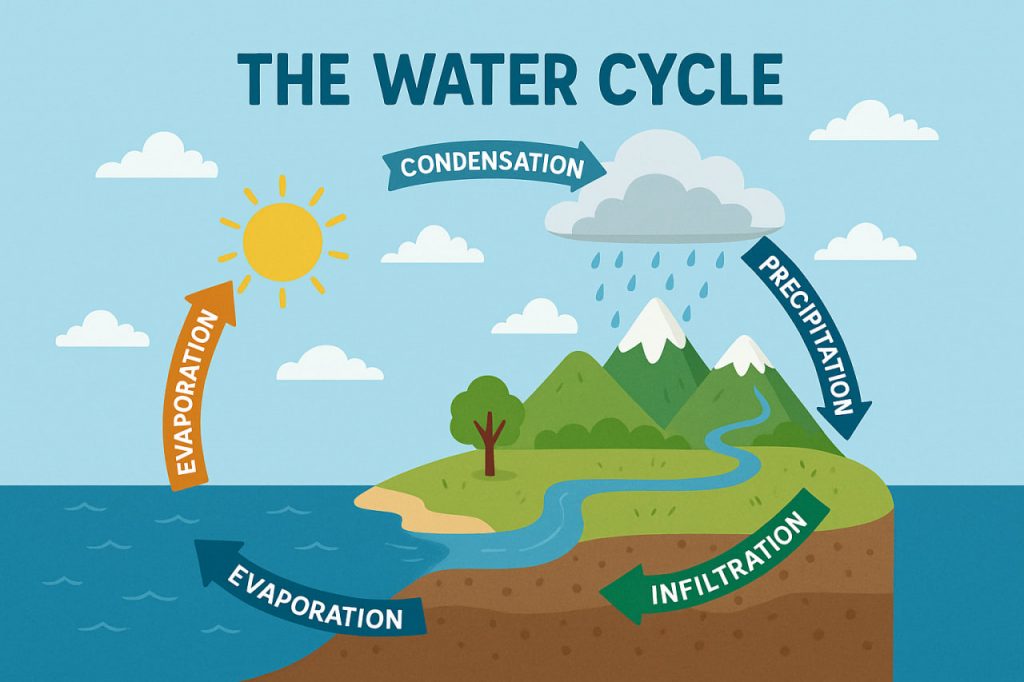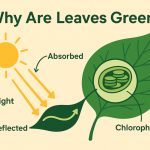Water is constantly on the move. It flows, evaporates, freezes, melts, and condenses in a repeating loop that supports all life on Earth. This continuous movement is called the water cycle (or hydrologic cycle). It connects the ocean, atmosphere, land, plants, and animals in a complex and essential natural system.
Key Stages of the Water Cycle
1. Evaporation
The cycle begins when the Sun heats water in rivers, lakes, and oceans. This causes the water to evaporate, turning it into invisible water vapor that rises into the air.
- Heat causes surface water to change into gas
- Wind and temperature affect how quickly evaporation happens
- Transpiration, the release of water vapor from plants, also contributes
2. Condensation
As water vapor rises into the cooler upper atmosphere, it cools down and condenses into tiny water droplets, forming clouds.
- This is the opposite of evaporation
- Water molecules cling together around dust particles
- Cloud formation is a visible sign of condensation
3. Precipitation
When the water droplets in clouds grow heavy enough, they fall to the Earth as precipitation:
- Rain
- Snow
- Hail
- Sleet
Precipitation depends on temperature and weather conditions.
4. Collection / Accumulation
Fallen water collects in oceans, lakes, rivers, and underground aquifers. This water can then:
- Return directly to evaporation
- Be absorbed by plants (and transpired again)
- Flow as runoff back into larger bodies of water
5. Infiltration and Groundwater Flow
Some water seeps into the soil and becomes groundwater. It moves slowly through underground rock layers and feeds wells, springs, and wetlands.
Why the Water Cycle Matters
- Maintains ecosystems: Freshwater supports plants, animals, and agriculture
- Regulates climate: Clouds reflect sunlight, and oceans store heat
- Purifies water: Through evaporation and infiltration
- Supports human life: Drinking water, hygiene, farming, and power generation
The cycle has no starting or ending point—it’s a closed loop powered by the Sun and gravity.
Human Impact on the Water Cycle
- Deforestation reduces transpiration
- Urbanization affects runoff and infiltration
- Climate change alters evaporation and precipitation patterns
- Pollution harms water quality and disrupts aquatic ecosystems
Understanding and protecting the water cycle is crucial for a sustainable future.
Conclusion
The water cycle is nature’s way of recycling water. It’s an invisible engine that moves moisture through the air, land, and oceans—essential for every living thing. By preserving clean water and natural landscapes, we help keep this cycle healthy and balanced.
Glossary
- Evaporation: Water turning into vapor
- Condensation: Vapor turning back into liquid
- Precipitation: Water falling from clouds to Earth
- Infiltration: Water soaking into the ground
- Transpiration: Water released by plants into the air


